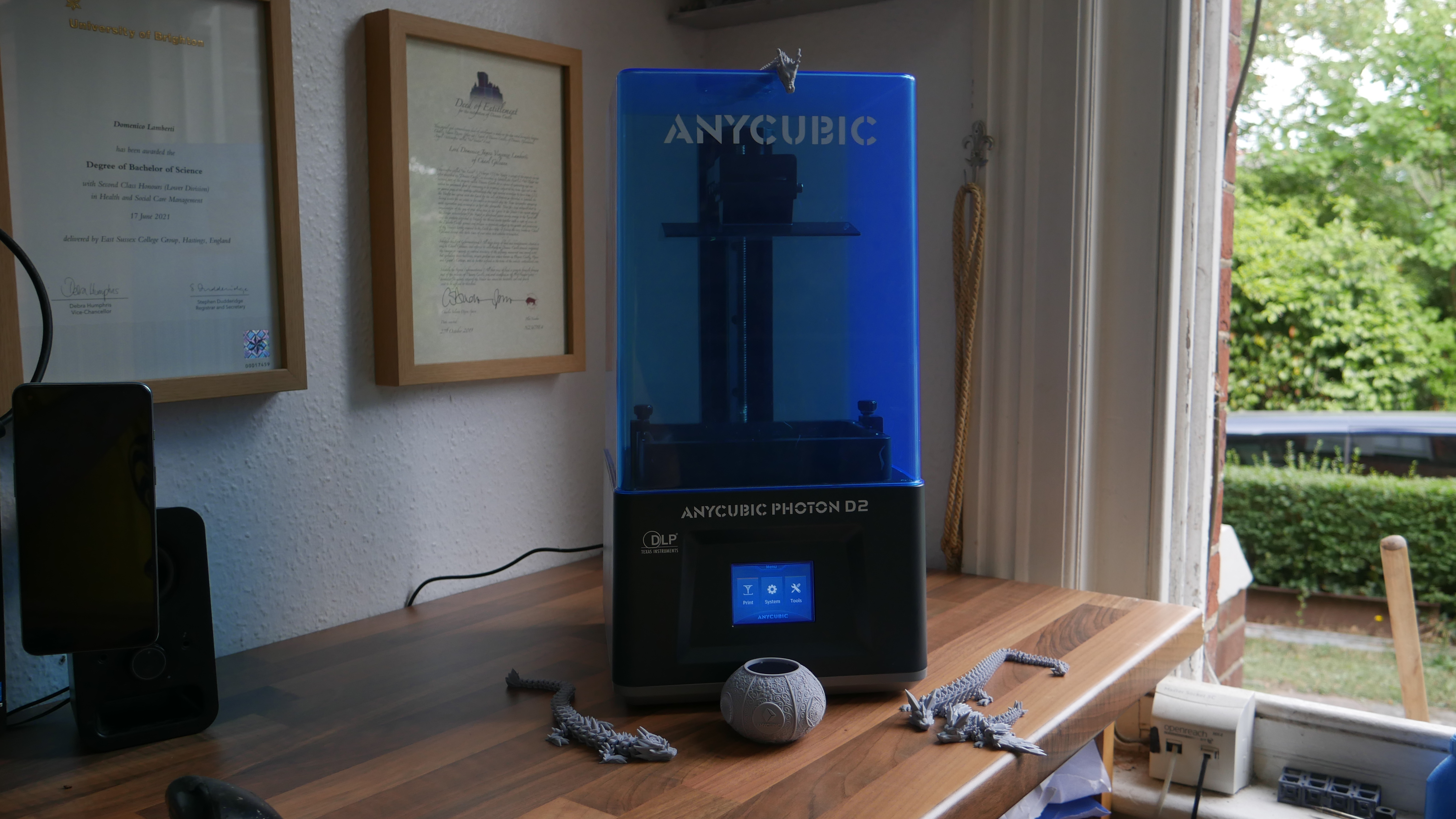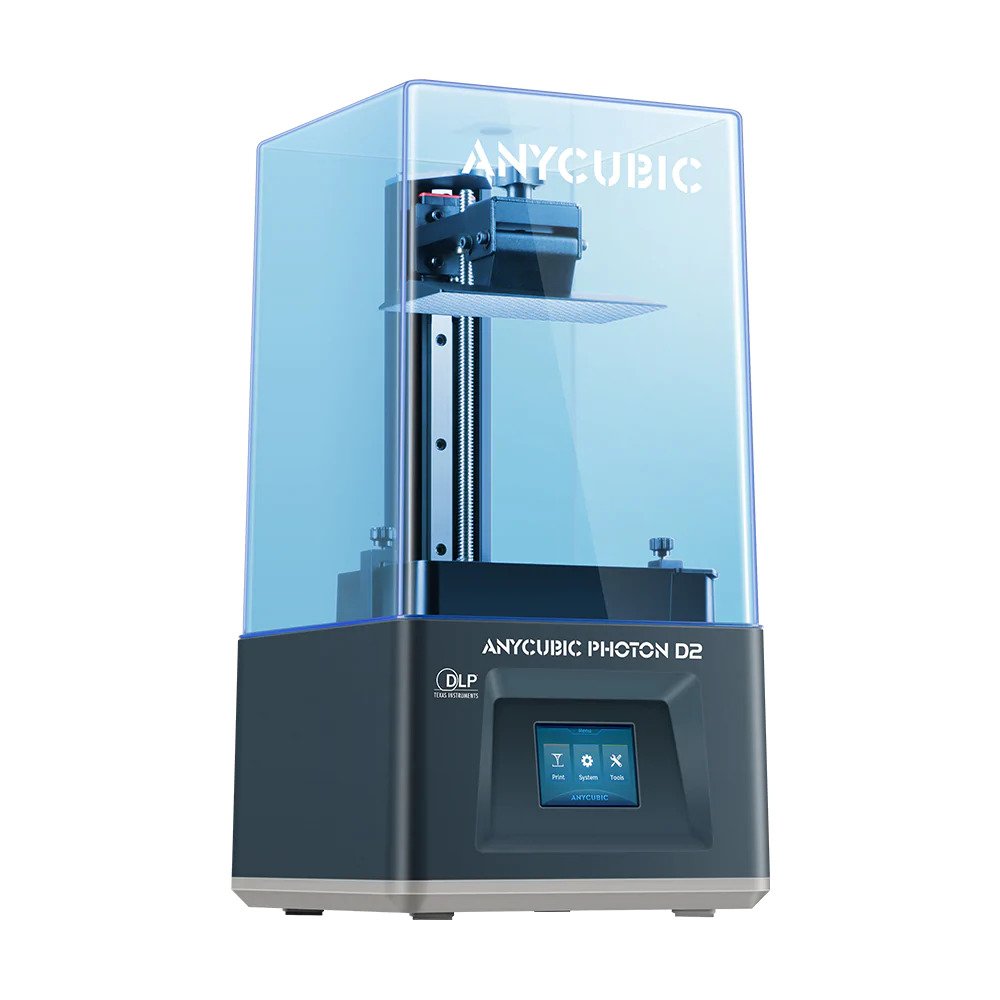Windows Central Verdict
The Photon D2 is a 3D printer that works incredibly well but has such an incredibly niche use case it is hard to recommend for the majority of people. There is no denying the clarity and the longevity of DLP resin printers, but the high machine cost and high resin cost betray it.
Pros
- +
+ Crisper details at the same resolution as LCD M-SLA
- +
+ Incredibly low power consumption
- +
+ Incredible 20,000-hour lifespan
- +
+ Photon Workshop is already compatible
Cons
- -
DLP-specific resins are more expensive
- -
Machine cost is more expensive
- -
Small build volume for the price
- -
Small screen with old UI
Why you can trust Windows Central
Resin 3D printers are not the unicorn they once were, with the relatively simple motion system and the standard components used throughout most consumer printers (the ChiTu board, for example) you are picking a resin printer based on your price point and the build volume you want. At least until last year when Anycubic, a well-known entrant in the field, teamed up with electronics behemoth Texas Instruments to use its miniaturized DLP projector in a 3D printer. So instead of using a phone screen without a backlight, they used the DLP projector and mirrors to mask and selectively cure resin, and now they're back for Round 2.
The Photon D2 is an upgrade to last year's Photon Ultra, upgrading practically everything, the projector resolution has gone from 1280x720 to a much more competitive 2560x1440, and the build volume has similarly gotten a bump to 131mm x 73mm x 165mm. Whilst the Photon D2 does improve upon the Photon Ultra, it still has to compete with the LCD-based printers, and those aren't quite as easy to beat.
Anycubic Photon D2: Pricing and availability
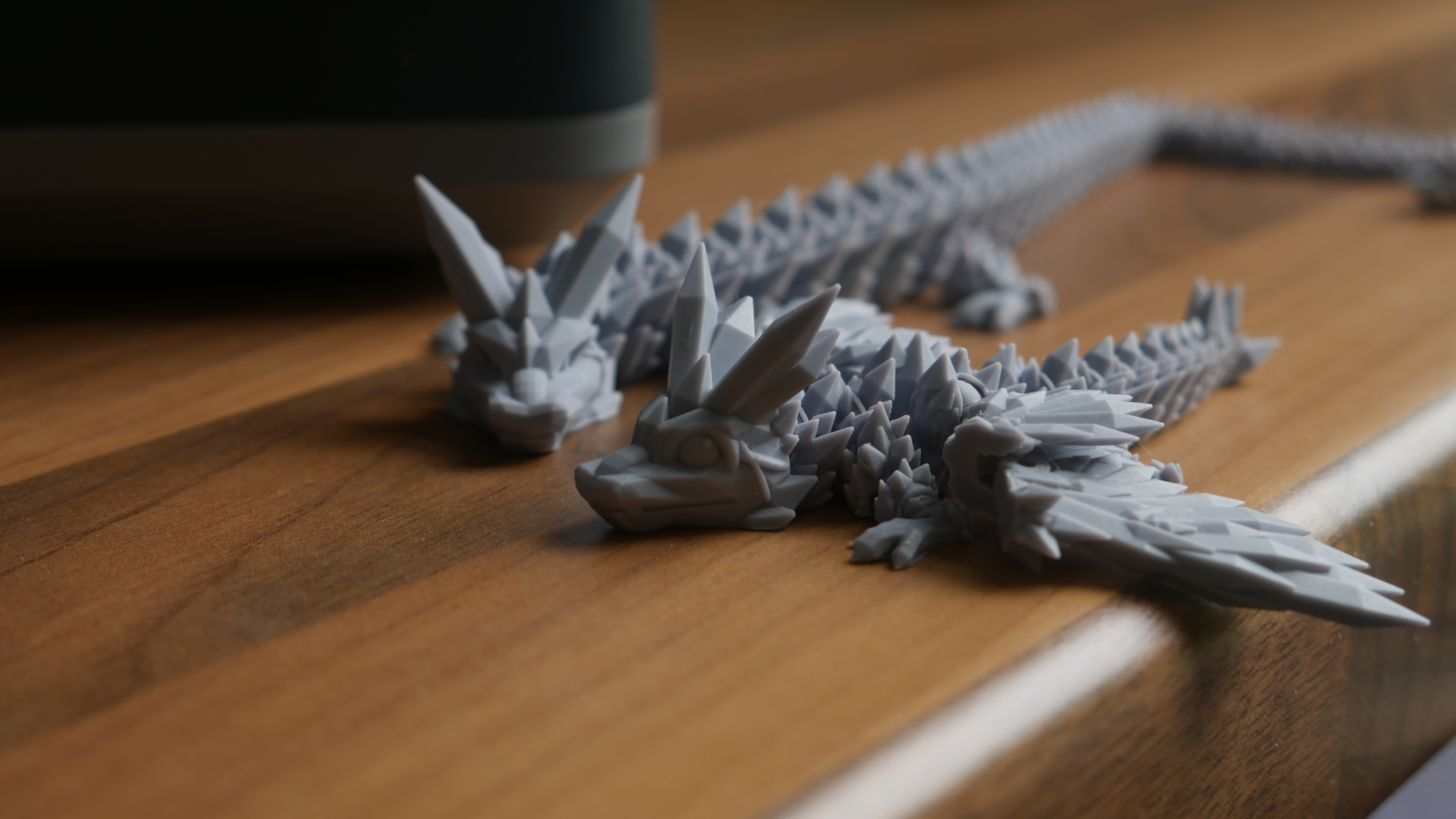
The Photon D2 will be available for $699 from Anycubic’s website and later on Amazon. The benefit of being able to buy from Anycubic directly is that you are able to bundle it with some of its Craftsman DLP resin (remember, you will need difference resins for DLP than LCD machines) as well as being able to buy one of its Wash and Cure Plus stations, something we think is mandatory for safety reasons with these machines.
Anycubic Photon D2: What you'll like
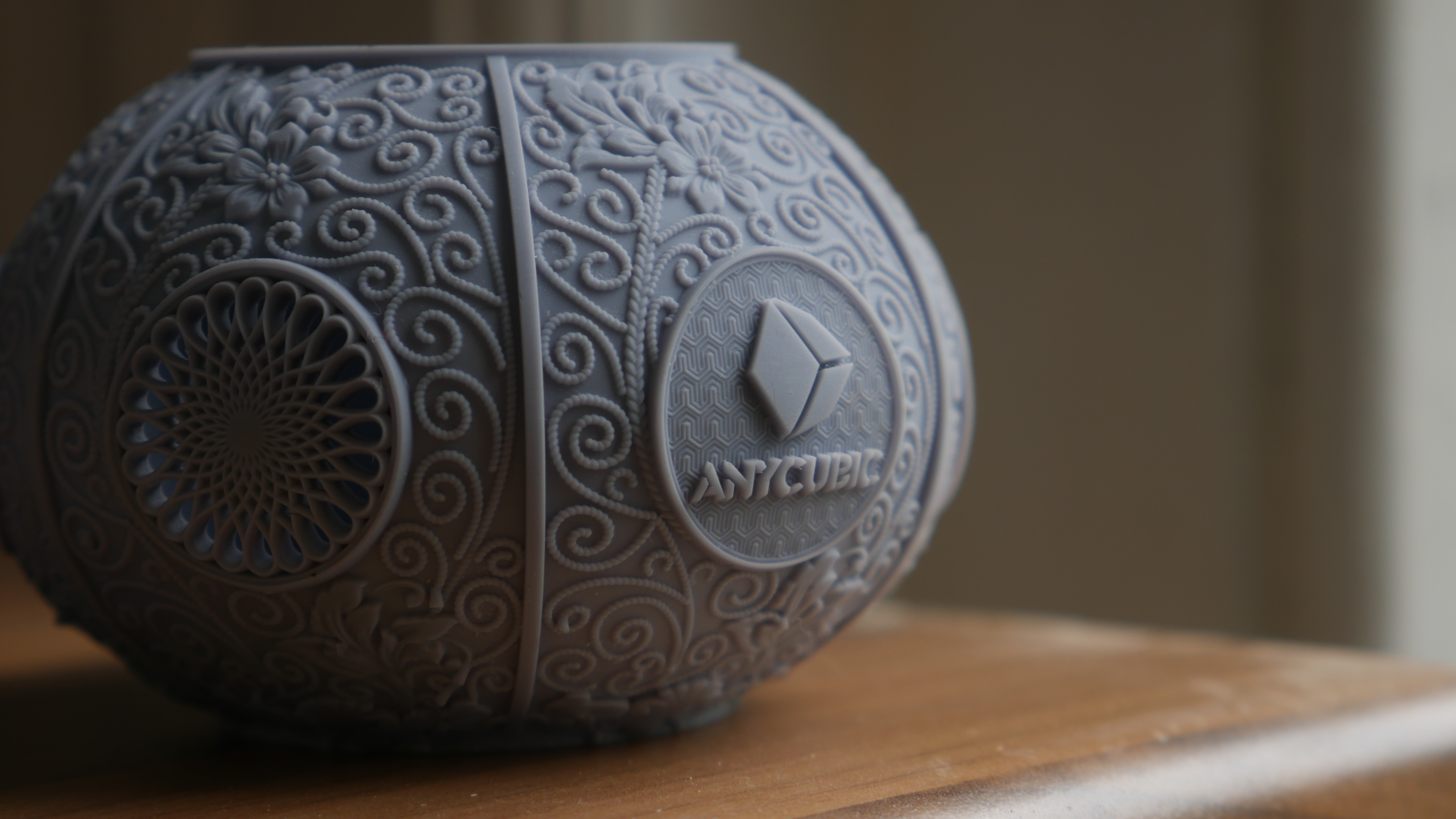
There is no getting around the pretty unbelievable print quality here. Resin 3D printers already have superior resolution and detail than FDM machines, given that the pixel pitch is usually 1/8 of the size of a standard 0.4mm nozzle, but comparing the 2560x1440 resolution of the Photon D2 to my Photon Mono with a 2560x1620 resolution, the D2 has sharper edges, the resolution is practically the same, but smaller finer details like teeth, wispy hair, eyebrows, etc., look smoothed out on the Photon Mono, as the UV Bloom is artificially softening those edges, like unintentional anti-aliasing.
This means that whilst you won't see a massive increase in quality if you are pretty the standard flavor of the week print on printables. If are making a lot of small, intricate pieces, particularly jewelry, or things that are going to be cast in metal, the sharpness of the Photon D2s DLP projector will help you here.
The benefits of DLP also extend to longevity. When consumer M-SLA printers first came along, they used normal RGB LCD screens; these lasted between 500-800 hours before they needed to be replaced. A few years ago, monochromatic LCD screens became more common. They increased light transmission, reduced heat, and therefore increased panel life to roughly 2,000 hours. The degradation partially happens because the UV lamp creates heat when it hits the masked parts of the LCD. The heat makes it degrade quicker, and RGB subpixels block a lot of light, because there are three color filters. Going to monochrome screens increased lifespan because removing two of those color filters meant the panel didn't get as hot.
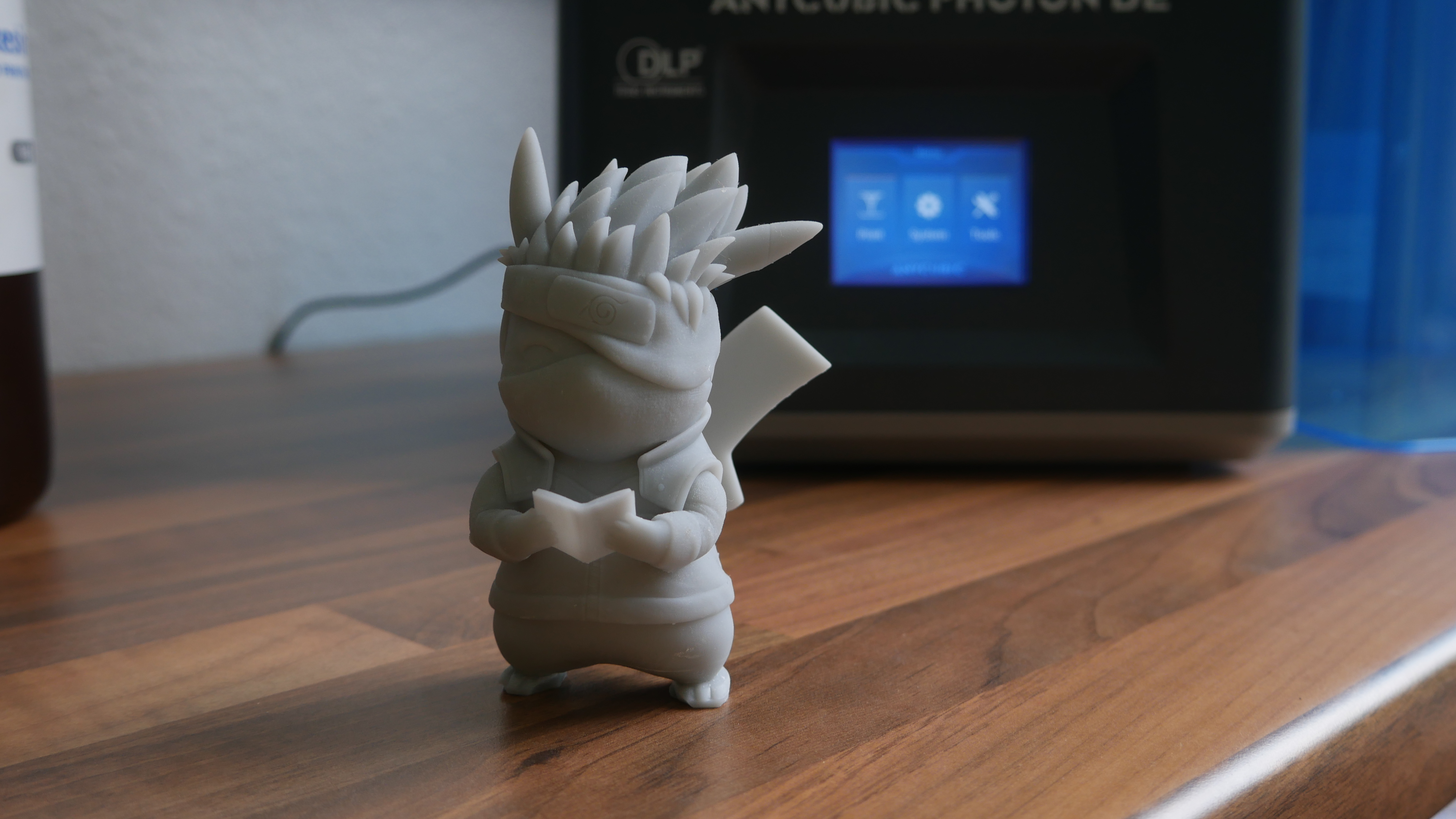
The DLP Projector inside the Photon D2 can last a whole 20,000 hours before it should be replaced. To put that into perspective, 20,000 hours is 833 days, and 833 days is a little under 28 months. If you somehow never ran out of resin or build volume, you would be printing on this for 2 years and 4 months before it died, which is utterly ridiculous, and it is 10 times longer than a comparable build volume and resolution LCD M-SLA printer.
Next is the power consumption, an area where SLA machines already shine. There is only one moving axis, a lamp and a screen. Most Resin machines are between 45-60w compared to the 250-500w of FDM machines — the energy usage of course goes up when you increase the build size and need a larger heated bed or a larger UV lamp. The Photon M3 Max from Anycubic has a massive 300mm x 298mm x 164mm build volume and requires 120w. The Photon D2 on the other hand, because there is no UV lamp and no screen, has a very low power consumption, just 15w. What does that mean in usage and cost? It means to get 1kW of energy usage, you’d have to run the Photon D2 for 67 hours. Where I live, 1kW of electricity is $0.32, so it would take 67 hours for the Photon D2's energy bill to cost me £$0.32. I can live with that.
| Specs | Anycubic Photon D2 |
|---|---|
| Build Volume | 131mm x 73mm x 165mm |
| Build Plate | Laser-etched aluminum |
| Power consumption | 15w |
| DLP Lifespan | 20,000 hours |
| Interface | 2.8-inch TFT |
| Resin type | DLP |
Anycubic Photon D2: What you won't like
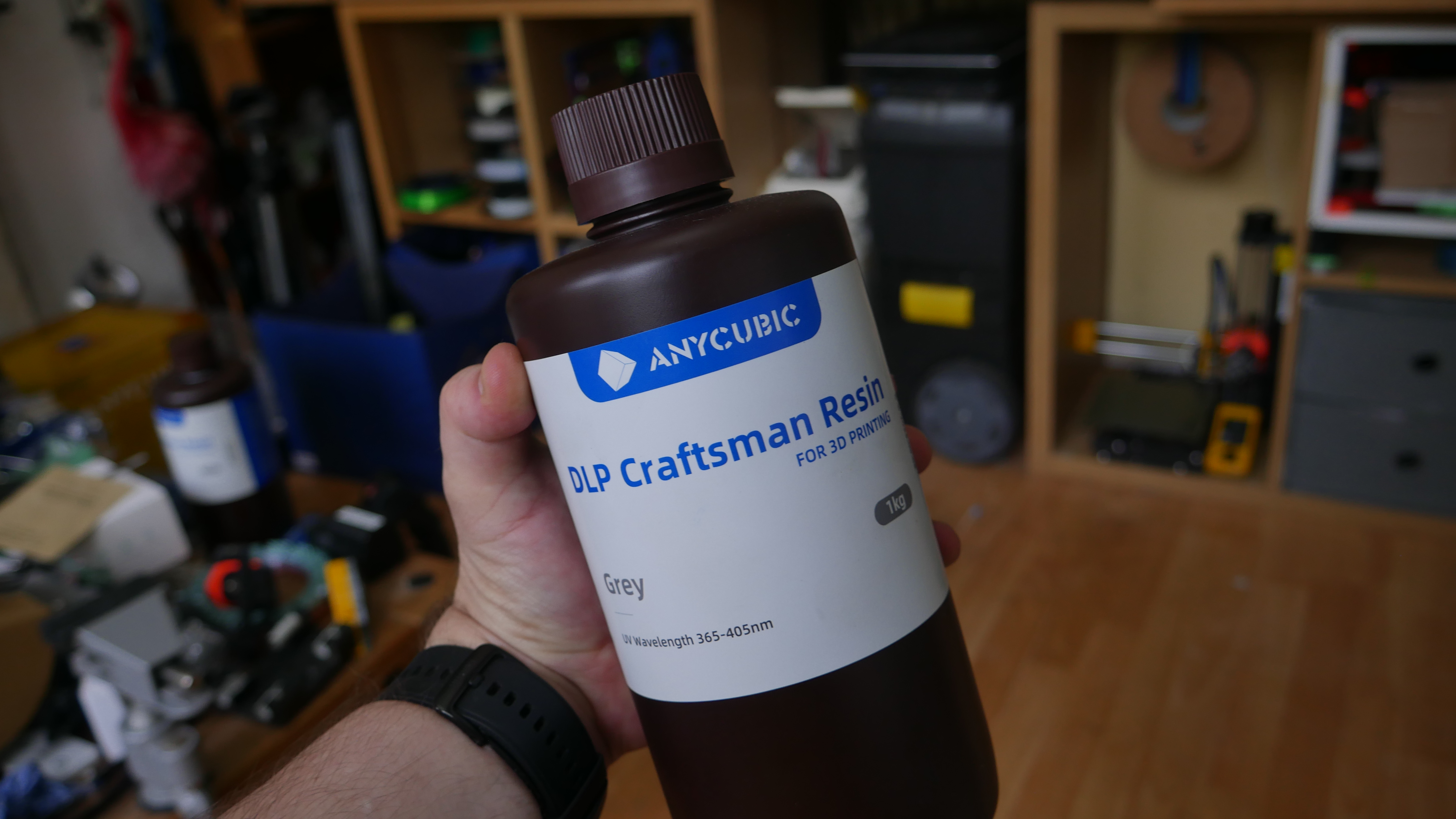
Whilst there are a few good things about the Photon D2, there are a few things that really go against its favor, the top three are the price, the build volume for the price and the resins. Starting with the price, $699 is a lot for this sized machine, in the hobbyist and consumer market you can get this sized machine for significantly less money, and whilst they will not have the lifespan of this and they’ll use more electricity, you can buy them cheaper, you can buy the resins much cheaper, you can buy more of them, and use them to pay back quicker with larger batch printing. I was shocked to find the $699 price tag in the midst of testing the Photon D2, I had initially expected $350-$450, more expensive than similar-sized M-SLA, but reasonable nevertheless. The $699 is hard to swallow.
Branching off from that is the build volume for the money. If we go for similar build volumes, we get machines around the $300 mark. The Photon M3 from Anycubic has a larger 164mm x 102mm x 180mm build volume with a higher resolution of 4096x2560 and is $300. The Mars 3 Pro from Elegoo is $350 with the same resolution screen but a smaller build volume of 143mm x 89mm x 175mm. It gets worse when you swap it. How much build volume on other printers do you get for $699? Boy is it a lot. The Photon M3 Plus has a 9.6-inch 6K screen (5760x3600) and a build volume of 197mm x 122mm x 245mm for $699. The Elegoo Saturn 2 for $600 has a 10-inch 8K screen (7680x4320) and a build volume of 219mm x 123mm x 250mm. Yes, they will not last as long, and yes, they will use more power, but they are likely going to be much easier to get parts for.
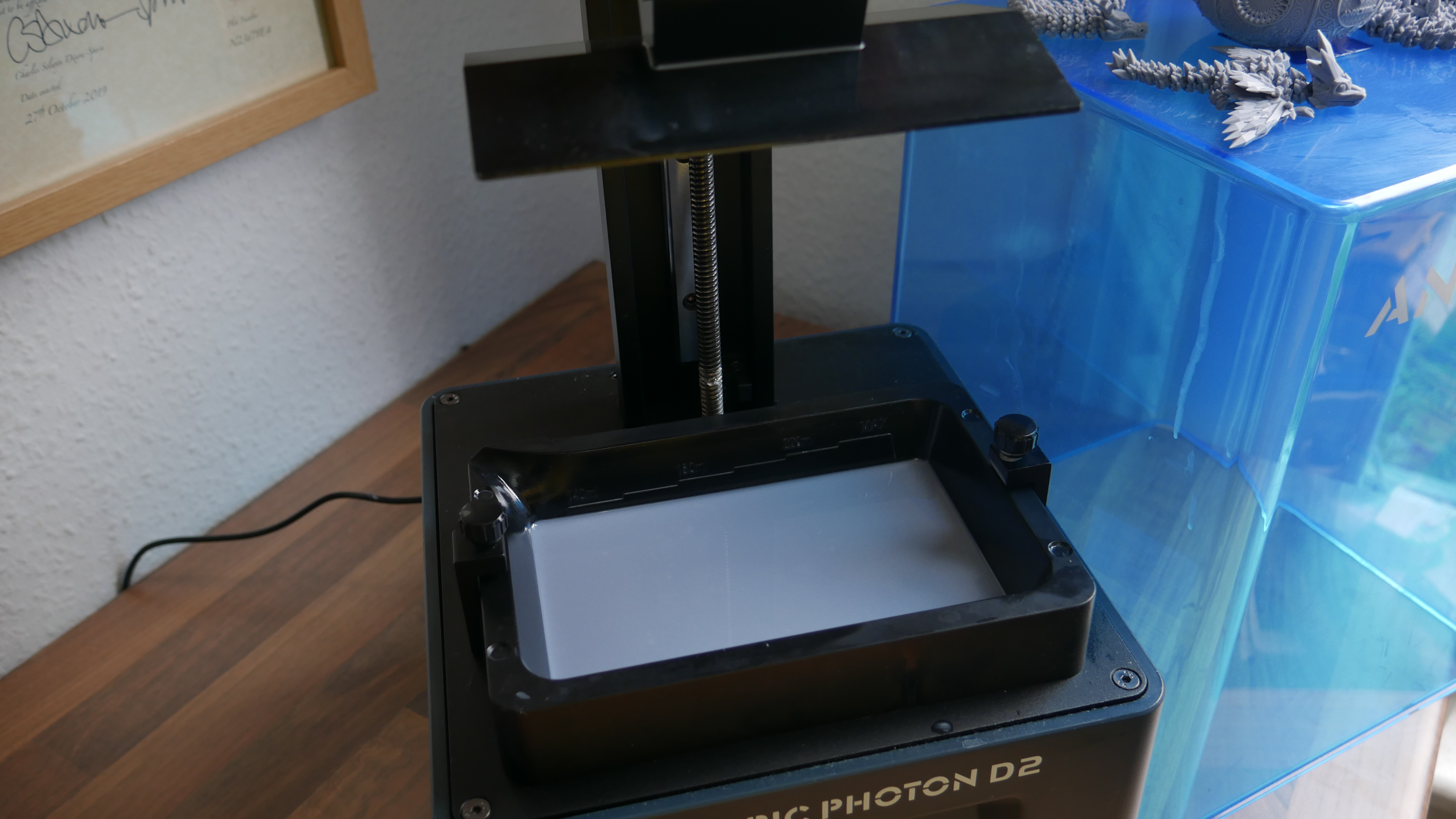
Lastly is the resin support. Because it doesn't directly use a UV lamp to cure the resin, standard M-SLA resins cannot be used, at least not a lot of them, so you will have to buy DLP-specific resins. In my experience DLP-specific resins are significantly more expensive, being roughly twice the cost for the same amount of liquid. The ones I have used also had a significantly stronger odor than newer M-SLA resins, meaning that ventilation is going to be more of a concern, and lastly, this could just be the Craftsman DLP resin from Anycubic, but no matter the exposure level I tested with, it just seems more brittle, with more than a few of my prints getting damaged trying to get them off the build plate.
Anycubic Photon D2: Competition
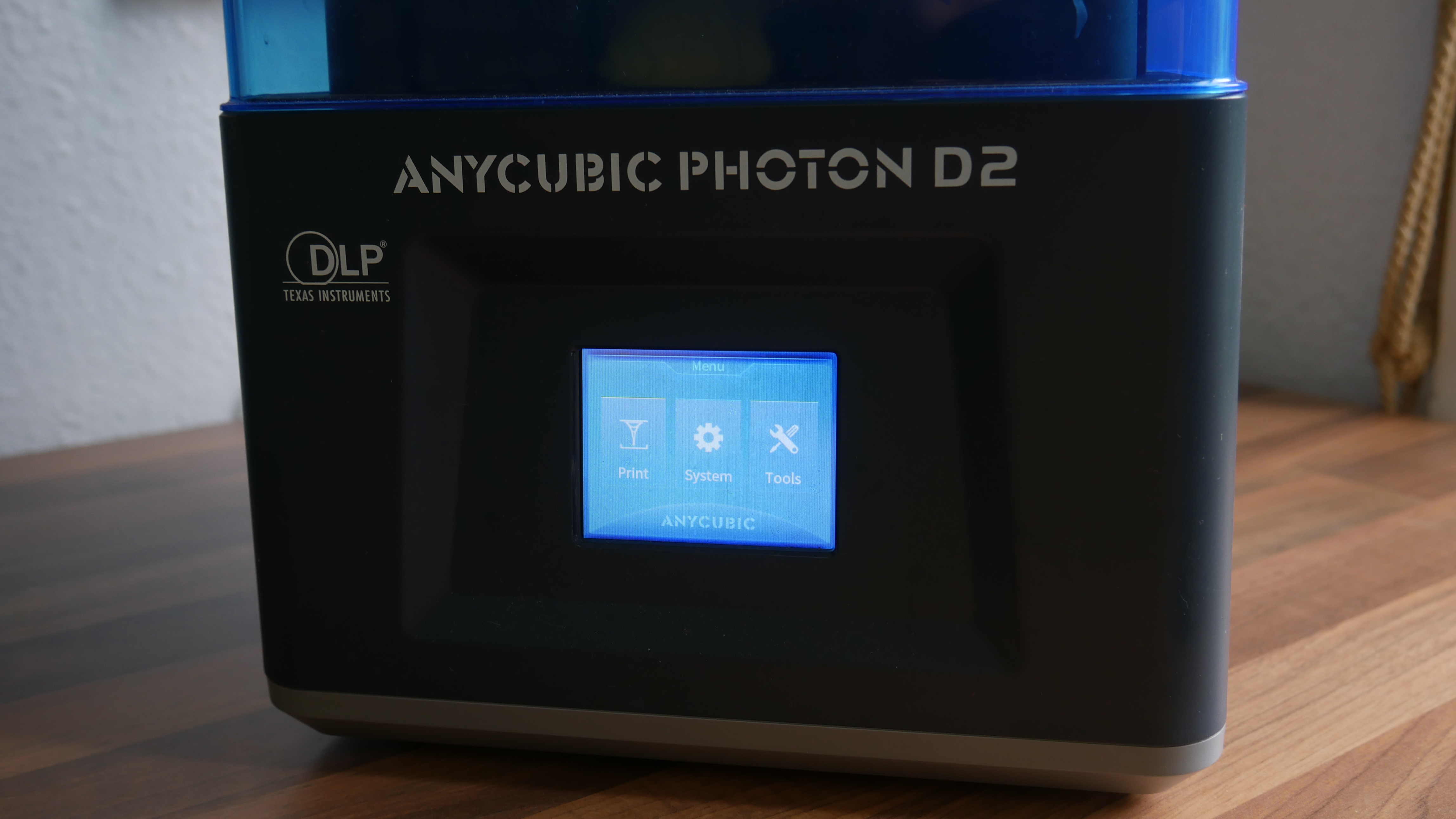
Anycubic is in a strange position here wherein they really don't have much competition. If you absolutely have your heart set on a DLP printer, the options are this, the Photon Ultra it is replacing, or the $10k industrial machines used for jewelry and low batch production work. However, I’m not sure much of that market exists. Maybe you are a small boutique jewelry shop, this makes significantly more sense than those expensive ones at first, and is one of the few workflows of the increased sharpness of DLP being taken advantage of.
If we’re talking about price point competitors though, Elegoo and even Anycubic’s own lineups give the Photon D2 a run for its money. The M3 Plus has a bigger build volume, a larger screen, a nicer UI, uses more common resins, has an auto-refill resin feature and Wi-Fi support, and the Photon D2 feels dated by comparison.
Anycubic Photon D2: Should you buy it?
You should buy this if ...
- You need the utmost detail and sharpness
- Electricity is ludicrously expensive where you are
- You value longevity over most other specifications
- The price of consumables doesn't bother you
You shouldn't buy this if ...
- You want a large build volume
- You already have lots of resin brands you trust
- You care about the cost of consumables
- You don't mind changing screens
The Photon D2 is not a bad printer; on the contrary, it is a good printer. However trying to justify it is going to be difficult, sure you can try to argue that the longevity of the projector and the lower energy costs make it a good choice, but the high introduction price and the high consumables cost negate that. If you care enough about energy costs are you really going to want to spend twice as much upfront and twice as much on your consumables?
The only group I can think of that the Photon D2 makes sense for is small businesses making jewelry, rings, and bracelets or also selling custom miniatures, and even that second group feels like a push, but those kinds of people who are using this in a production sense, just a small production sense, will care more about how long the machine lasts, how much it adds to their utility bills and they are willing to spend more on consumables if it gives them a better, more reliable printing experience. The Photon D2 deserves to exist, I’m just not sure it deserves to exist in the hobbyist/consumer market.

